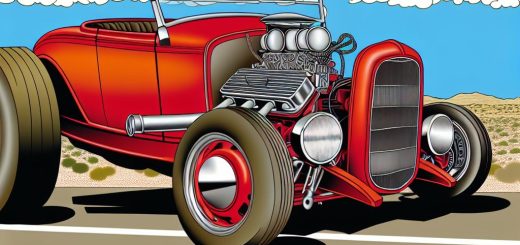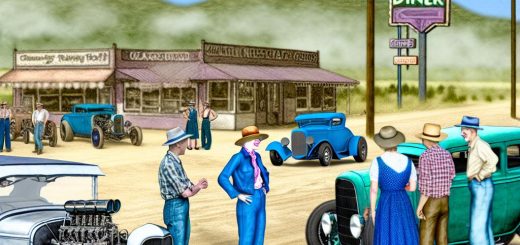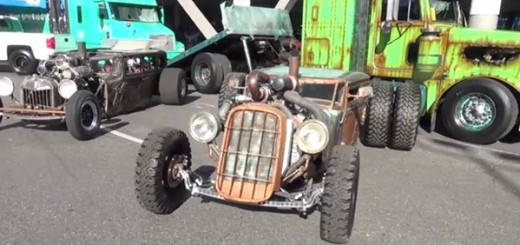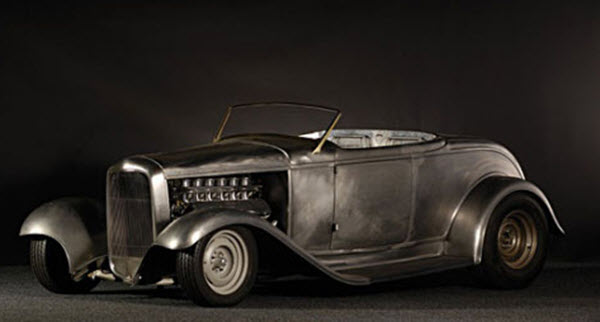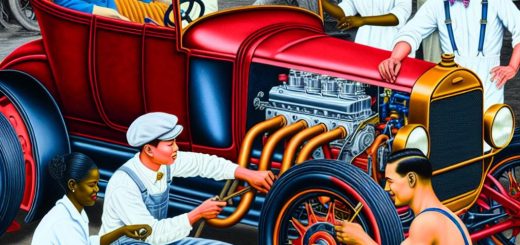Contents
The 1932 Ford “Deuce Coupe”: A Milestone in Automotive History
The 1932 Ford, affectionately known as the “Deuce Coupe,” represents a pivotal development in American automotive history. Its significance is underscored by its advanced engineering and the indelible mark it left on automotive culture. Launched during the economic tumult of the Great Depression, this vehicle signifies a monumental shift for the Ford Motor Company and the broader automobile industry.
Introduction of the V8 Engine
A cornerstone of the 1932 Ford Deuce Coupe’s acclaim is its pioneering introduction of the affordable V8 engine. Prior to this innovation, V8 engines were largely confined to the realm of luxury automobiles, a niche far removed from the everyday consumer. Ford’s visionary approach redefined this norm by making the potent engine available to the general public. The flathead V8 was a remarkable achievement, offering robust performance capabilities with a power output of 65 horsepower—an impressive feat for its era. This strategic move by Ford established a new standard in the automotive industry, signifying a commitment to delivering high performance without necessitating a premium price tag.
Design and Style
The 1932 Ford Deuce Coupe captivated car enthusiasts with its avant-garde design and stylish aesthetics. It embodied a sleek, modern appearance that was ahead of its time, contributing to its iconic status. The vehicle was offered in both two-door coupe and sedan models, accommodating diverse consumer preferences. Its design allowed for a high degree of personalization and customization, which endeared it to automotive enthusiasts and particularly to the hot rodding community.
The Rise of Hot Rodding
In the decades following its initial release, the 1932 Ford Deuce Coupe emerged as a quintessential symbol of hot rod culture. The car’s affordability, coupled with the potential for extensive customization of its design, positioned it as a beloved choice among hot rod enthusiasts. These hobbyists often undertook modifications to boost the engine and chassis for augmented speed and performance, propelling a trend that had lasting impacts on American car culture in the post-war era. This cultural movement exerted considerable influence on subsequent automotive designs and preferences.
Cultural Impact
Beyond its mechanical and design innovations, the Deuce Coupe left a profound imprint on American popular culture. It was celebrated in numerous songs and feature films, most notably immortalized in the Beach Boys’ hit song “Little Deuce Coupe.” This cultural representation helped secure its place in American folklore, epitomizing motifs of freedom, rebellion, and the open road. The vehicle transcended its status as mere transportation to become a cultural artifact embodying a unique period in American history.
The historical and cultural significance of the 1932 Ford Deuce Coupe extends beyond its mechanical attributes. To delve deeper into this subject, one might consider exploring resources curated by automotive history aficionados or visiting dedicated automobile museums, such as those that chronicle the developments of this era. A valuable resource can be found here: Henry Ford Museum.
In conclusion, the legacy of the 1932 Ford Deuce Coupe rests on its fusion of affordability, performance, and design excellence, cementing its role as a titan in automotive history. Its far-reaching influence is evident not only in the manufacturing of vehicles but also in the cultural spheres it touched, speaking to an era marked by transformation and inventive spirit. The Deuce Coupe continues to symbolize the quintessential blend of innovation and cultural resonance, standing as a testament to the ingenuity of its time. Through its enduring presence in American cultural and automotive lore, the 1932 Ford Deuce Coupe exemplifies a historic milestone that remains relevant even today.



